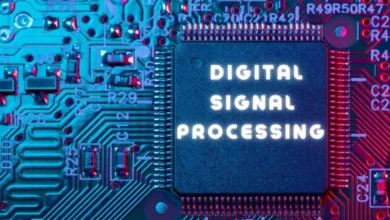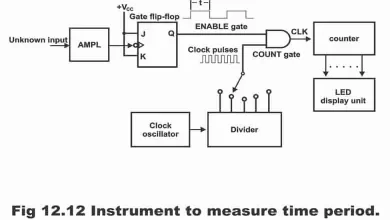Flip-Flop Combinational logic circuits and Sequential logic circuits
Flip-Flops
Flip-Flop Combinational logic circuits and Sequential logic circuits- Flip-flop is a memory element, which can store at a time either binary 1 or binary 0. In other words, a digital element, which can store only one bit of a binary data, is known as a flip-flop. It has only two stable states i.e. binary 0 or low and binary 1 or high. It is a prominent feature of a flip-flop that as long as status of its input signal is not changed, it remains indefinitely on any one of the afore – mentioned two states (as long as power is transmitted on the circuit). Flip-flop is a basic memory element and it is also known as a bistable multi – vibrator. Flip-flops are mostly used in the construction of registers, counters and timers etc. Logic circuit is normally divided into two types. The following types expounds the difference between operations of these two types of logic circuits.
- Combinational logic circuits
- Sequential logic circuits
In combinational logic circuits (about which we have already read in the previous chapters) gates serve as basic building block (i.e. these circuits are manufactured through the assistance of different logic gates), whereas sequential logic circuits are used in timing and memory devices and flip-flop serve as a building block on them. In other words, basic feature of a sequential circuit has been memory or sequential circuits are a type of circuits, which have a capacity to store binary numbers. flip-flop is a basic chip which is being used on a sequential circuit. A sequential circuit comprises a feedback path between combinational circuit and memory elements, as has been represented by a block diagram of the sequential circuit in figure 5.1. Memory elements are devices which have a capacity to store binary information within it. The binary information stored within memory elements at a given period of time, explicates the state of a sequential circuit. Sequential circuits receive binary information via extrinsic inputs. These inputs, indicate binary values on output terminals by means of mixing with existing memory elements. Block diagram indicates that external outputs of a sequential circuit also depends on present state of memory elements apart from external inputs.
Figure 5.1 – block diagram of a sequential circuit
The outputs of logic or digital circuits (combinational circuits, which we have already studied in the previous chapters), completely depends on their inputs. That’s if the input state of these circuits is altered, their output states will also primarily be changed. However, there are some digital devices or circuits, the output of which if once set, does not undergo any sort of a change in spite of a change in its input levels (i.e. its output remains unchanged). This type of circuit or device is being used in order to store binary numbers. And flip-flop is one of such circuits. The state on which a flip – flop has primarily been set, flip – flop remembers that condition. In other words, the data which is provided on a flip-flop (through applying proper logic inputs), is effectively remembered by a flip-flop. Remember that in sequential circuits, memory elements or flip – flops are used apart from logic gates and their output depends on the inputs being applied and the state of its memory elements, whereas memory elements depend on previous inputs. Thus, output of a sequential circuit not only depends on existing inputs, but also on the previous inputs. The role of this type of circuit is described in accordance with time sequence of the inputs and their internal states. Moreover, flip-flop circuits contain normal as well as complement output values of stored binary variables.
There are further following two types of a sequential circuit.
- Asynchronous circuits
- Synchronous circuits
Asynchronous circuits are such circuits, the output state of which changes corresponding to a change in its inputs (i.e. when input changes, output of these circuits also tend to change). In other words, such circuits depend on inputs or these circuits are input-dependent circuits.
Synchronous circuits are such circuits, the output state of which changes when they are triggered by means of clock pulses. In other words, such circuits do not depend on inputs i.e. such circuits are independent of inputs.
Sequential circuits normally consist of flip – flops, ledgers, registers and counters etc. However, flip-flops are commonly used for protecting and storage of data, data arrangement or sequencing, counting and timing etc. (i.e. flip–flops are used to manufacture counters, shift registers and similar type of other memory devices).
In short, flip-flop is a digital circuit which has two stable states. A flip-flops sustain indeterminately on any of these two stable states, until one input compellingly changes its state and set it on some other stable state. Flip-flops are used in order to store binary information and such digital memory circuits (which can store data bits) are a critical and compulsory part of a computer system.
Previous Topic: Working Of Diode Rom with Gray Code and Circuit Diagram
Next Topic: RS Flip-flop Circuits using NAND Gates and NOR Gates
For electronics and programming-related projects visit my YouTube channel.





